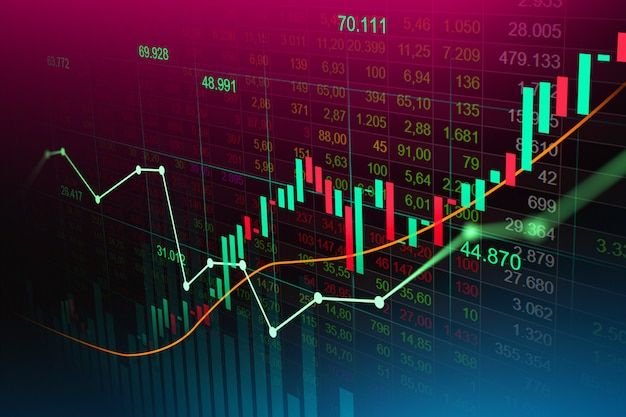Bitcoin, the pioneering cryptocurrency, has recently experienced a historic price surge, reaching unprecedented levels and capturing the attention of investors, analysts, and the global financial community. As of December 21, 2024, Bitcoin’s price has again surpassed $100,000. Several key factors have contributed to this remarkable ascent:
1. Institutional Adoption and Investment
The increasing involvement of institutional investors has played a pivotal role in Bitcoin’s price appreciation. Major financial institutions and corporations have recognized Bitcoin as a legitimate asset class, leading to substantial investments and the integration of Bitcoin into their portfolios. For instance, the approval and growing popularity of Bitcoin Exchange-Traded Funds (ETFs) have provided a regulated avenue for institutional and retail investors to gain exposure to Bitcoin, thereby boosting demand and driving up prices.
2. Macroeconomic Factors and Fiscal Policies
Global economic conditions and fiscal policies have significantly influenced Bitcoin’s appeal as a store of value. Concerns over inflation, currency devaluation, and rising national debts have led investors to seek alternative assets to preserve wealth. Bitcoin’s decentralized nature and limited supply make it an attractive hedge against traditional financial system uncertainties. Notably, predictions from industry leaders, such as Strike CEO Jack Mallers, suggest that Bitcoin could reach $1 million, driven by fiscal instability and Bitcoin’s scarcity.
3. Technological Developments and Network Upgrades
Advancements in Bitcoin’s underlying technology have enhanced its scalability, security, and utility, contributing to increased adoption and investor confidence. Upgrades such as the implementation of the Lightning Network have improved transaction speeds and reduced costs, making Bitcoin more practical for everyday use and increasing its attractiveness to a broader user base.
4. Regulatory Clarity and Governmental Support
The establishment of clearer regulatory frameworks has provided legitimacy and security to the cryptocurrency market. Supportive policies and statements from governments have alleviated investor concerns regarding potential legal challenges. For example, the anticipation of a more crypto-friendly administration under President-elect Donald Trump has bolstered market sentiment, with expectations of policies that favor the growth and integration of digital assets into the economy.
5. Market Dynamics and Investor Sentiment
Market psychology and the cyclical nature of Bitcoin’s price movements have also played a role in its recent surge. Historical patterns, such as the four-year halving cycles, often lead to periods of increased demand and price appreciation. Positive news, endorsements from influential figures, and fear of missing out (FOMO) have further fueled buying pressure, creating a feedback loop that propels prices higher.
6. Supply Constraints and Increased Demand
Bitcoin’s fixed supply cap of 21 million coins creates a scarcity that becomes more pronounced as demand increases. Recent data indicates a significant amount of Bitcoin being moved off exchanges into cold storage by large investors, signaling long-term confidence and reducing the available supply in the market. This supply squeeze, combined with rising demand, has been a critical factor in driving up prices.
7. Integration into Traditional Financial Systems
The integration of Bitcoin into traditional financial systems has made it more accessible to a wider range of investors. The inclusion of companies like MicroStrategy into major stock indices, due to their significant Bitcoin holdings, reflects the blending of traditional finance with the cryptocurrency market. This integration has increased investor confidence and contributed to the recent price surge.
8. Global Geopolitical Tensions and Economic Uncertainty
Geopolitical tensions and economic uncertainties have led investors to seek safe-haven assets, with Bitcoin emerging as a preferred choice due to its decentralized and borderless nature. In regions experiencing economic instability, Bitcoin has been adopted as a means to preserve wealth and facilitate transactions, further driving global demand.
9. Media Coverage and Public Awareness
Increased media coverage and public awareness have played a significant role in Bitcoin’s price surge. As mainstream media outlets report on Bitcoin’s rising prices and potential, public interest grows, leading to increased investment from both retail and institutional investors. This heightened attention creates a positive feedback loop, where rising prices attract more investors, further driving up the price.
10. Technological Innovations and Ecosystem Growth
The broader cryptocurrency ecosystem has experienced significant growth, with technological innovations enhancing the functionality and appeal of Bitcoin. Developments in decentralized finance (DeFi), non-fungible tokens (NFTs), and blockchain technology have expanded the use cases for Bitcoin, attracting a more diverse investor base and contributing to its price appreciation.
Conclusion
Bitcoin’s historic price surge to over $100,000 is the result of a confluence of factors, including increased institutional adoption, macroeconomic conditions, technological advancements, regulatory developments, and market dynamics. As Bitcoin continues to mature and integrate into the global financial system, its price is likely to be influenced by a complex interplay of these factors. Investors should remain cognizant of the inherent volatility in the cryptocurrency market and conduct thorough research before making investment decisions.
Note: The information provided in this article is based on data available as of December 21, 2024. Cryptocurrency markets are highly volatile and subject to rapid changes.




